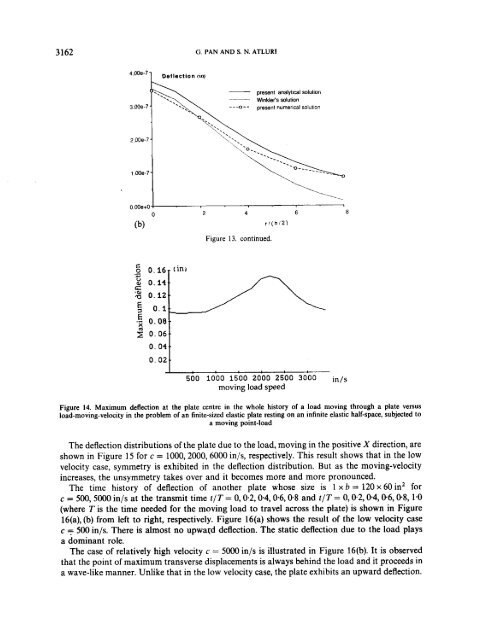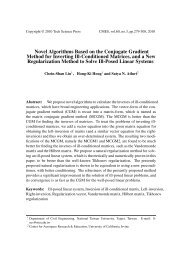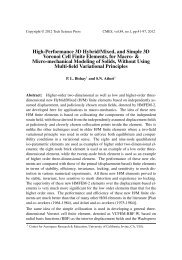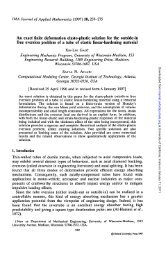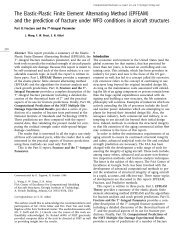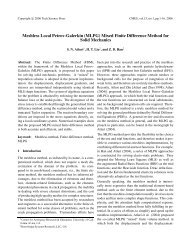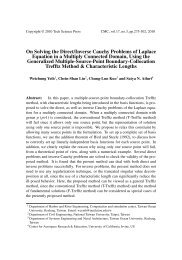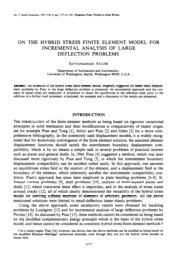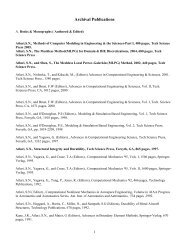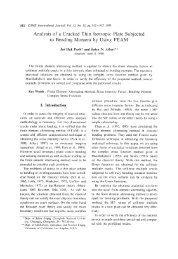Dynamic response of finite sized elastic runways subjected to ...
Dynamic response of finite sized elastic runways subjected to ...
Dynamic response of finite sized elastic runways subjected to ...
You also want an ePaper? Increase the reach of your titles
YUMPU automatically turns print PDFs into web optimized ePapers that Google loves.
3162<br />
G. PAN AND S. N. ATLURI<br />
4'00e-71 Deflection (in)<br />
'. -.<br />
'. -.<br />
. .<br />
1 ......<br />
0.14,.<br />
0.12.<br />
0.1;<br />
0.08.<br />
0.06.<br />
0. 04-<br />
0.02.<br />
Figure 14. Maximum deflection at the plate centre in the whole his<strong>to</strong>ry <strong>of</strong> a load moving through a plate versus<br />
load-moving-velocity in the problem <strong>of</strong> an <strong>finite</strong>-<strong>sized</strong> <strong>elastic</strong> plate resting on an in<strong>finite</strong> <strong>elastic</strong> half-space, <strong>subjected</strong> <strong>to</strong><br />
a moving point-load<br />
The deflection distributions <strong>of</strong> the plate due <strong>to</strong> the load, moving in the positive X direction, are<br />
shown in Figure 15 for c = 1000,2000,6000 in/s, respectively. This result shows that in the low<br />
velocity case, symmetry is exhibited in the deflection distribution. But as the moving-velocity<br />
increases, the unsymmetry takes over and it becomes more and more pronounced.<br />
The time his<strong>to</strong>ry <strong>of</strong> deflection <strong>of</strong> another plate whose size is 1 x b = 120 x 60 in2 for<br />
c = 500, 5000 in/s at the transmit time t/T = 0,0.2,0.4,06,0.8 and t/T = 0,02,0~4,0-6,0-8, 1.0<br />
(where T is the time needed for the moving load <strong>to</strong> travel across the plate) is shown in Figure<br />
16(a), (b) from left <strong>to</strong> right, respectively. Figure 16(a) shows the result <strong>of</strong> the low velocity case<br />
c = 500 in/s. There is almost no upward deflection. The static deflection due <strong>to</strong> the load plays<br />
a dominant role.<br />
The case <strong>of</strong> relatively high velocity c = 5000 in/s is illustrated in Figure 16(b). It is observed<br />
that the point <strong>of</strong> maximum transverse displacements is always behind the load and it proceeds in<br />
a wave-like manner. Unlike that in the low velocity case, the plate exhibits an upward deflection.


